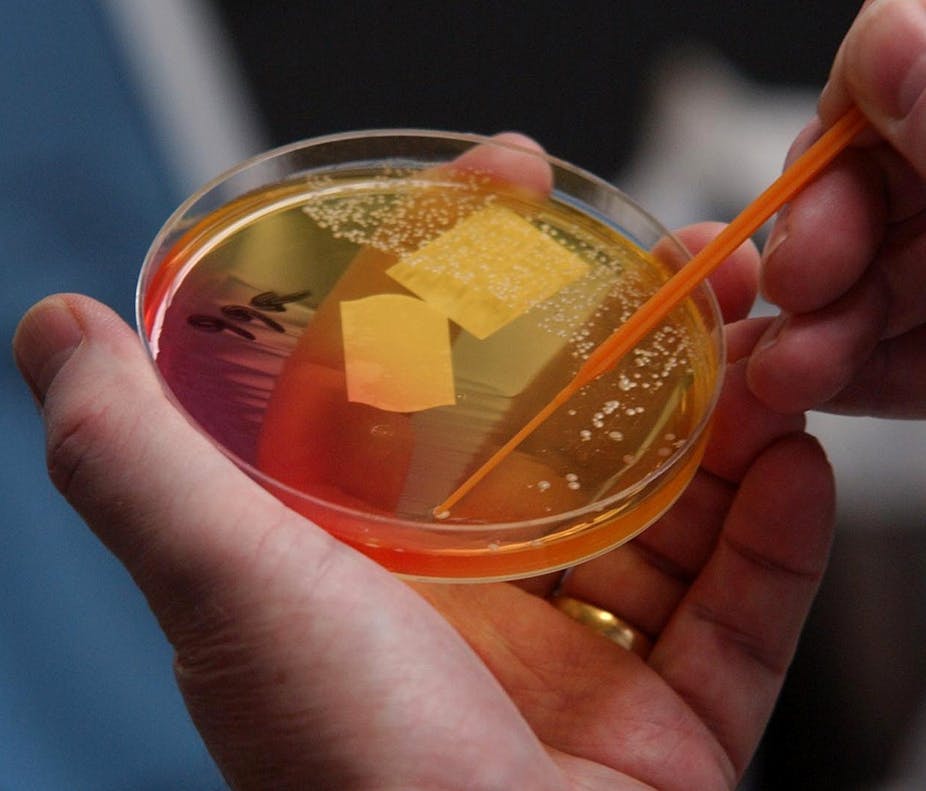The World Health Organisation’s World Health Day is dedicated to the threat posed by the rapid emergence of drug resistant organisms.
Viruses, parasites and bacteria have all developed some resistance to current drugs, but in Australia our biggest concern is bacteria.
The battle against drug-resistant malaria parasites and resistant viruses, such as HIV, has been raging for many years but the most daunting prospect is the danger posed by multi-drug resistant bacteria being disseminated around the world by travel.
These infamous bacteria, which are fighting back against once tremendously effective antibiotics, are popularly known as “superbugs”.
A global perspective
Worldwide, the health burden and impact of resistant parasites and viruses is most frightening.
One of the most harmful of these is the malaria parasite, which comes in different forms. The most sinister of these, falciparum malaria, kills between one and two million people a year.
Because this parasite has developed resistance against the most powerful and rapidly acting agent fighting it, treatment has been rendered considerably less effective.
Australia has been spared the threat of this parasite because the mosquitoes that spread the disease don’t exist here. But the country does have drug-resistant viruses, such as HIV and the hepatitis viruses.
We have been dealing with these for some time and our policies and health practices have curbed their spread. But, despite all of our antiretroviral drugs, HIV remains incurable and annually causes the death of two million people globally.
Multi-drug resistant tuberculosis, which is impervious to nearly all of our antibiotics, resistant Neisseria (a cause of meningitis) and resistant Shigella, the cause of dysentery, are major global concerns.
Australia
The greatest threat to Australia is the spread of superbugs because these bacteria are ubiquitous and spread with relative ease from person to person.
These organisms are dwarfed by the potential threat of “Golden Staph” (Staphylococcus aureus) and E.coli superbugs.
We all carry forms of these in our bodies but are able to mostly keep them at bay.
But when our immune systems weaken or our defensive barriers are compromised (for example, through surgical operations) we become susceptible to these bugs. This is why we refer to them as “opportunistic infectors”.
With the prevalent worldwide use of antibiotics, including unquantified cases of indiscriminate use, these bugs have been insidiously conspiring and fighting back.
MRSA
One example of this ability to fight back is a resistant Staph called MRSA (literally, methicillin-resistant Staphylococcus aureus) that we previously treated successfully with an antibiotic called vancomycin.
Then the Staph upped the ante and became resistant to this antibiotic as well, so we now call this superbug VRSA (vancomycin-resistant Staphylococcus aureus).
But the most alarming form of drug resistance is that conferred by a protein made by members of a large family, including E.coli. The protein New Delhi metallo-beta-lactamase or NDM-1 renders bugs resistant to a huge array of our antibiotics in one hit.
It is particularly disturbing because the gene that produces NDM-1 is efficiently spread from bug to bug.
Clostridium difficile
Another bug that especially thrives in the hospital antibiotic milieu is Clostridium difficile.
It is intrinsically resistant to some antibiotics, so when patients are treated with those antibiotics their normal gut organisms, which are for the most part harmless, are killed, clearing up space for Clostridium to invade and make a home at the expense of the patient’s health.
Causes
So why have these bugs emerged so quickly and why do they spread so well? The answer is addressed by the WHO initiative, which highlights the overuse, indiscriminate use and inappropriate use of antibiotics.
Alarmingly, in deregulated countries such as South Africa and Thailand, some drugs marketed as antibiotics have less than ideal concentrations of active ingredients.
This provides a perfect environment for the development of drug-resistant organisms.
The battle in Australia is now at the level of formulating good health practices and building desperately needed research capacity to find new cures.
These initiatives require public awareness and public support. As things stand, superbugs are beginning to greatly outnumber us.

